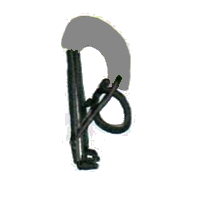(LONDON) por Paula Tooths
And following our sequence, today we have one more basic position!
“What if our religion was each otherIf our practice was our lifeIf prayer, our wordsWhat if the temple was the EarthIf forests were our churchIf holy water — the rivers, lakes, and oceanWhat if meditation was our relationshipsIf the teacher was lifeIf wisdom was self-knowledgeIf love was the center of our being.”~ Ganga White
Uttanasana has two lines of energy radiating outward from your center. Your hips will be in dog tilt, and the spinal column will be your primary line of energy. The idea is to elongate the spine outward through the crown of your head as you fold into the pose. This is the basic forward fold. Everything you learn here will be applicable to all forward folds. There are several excellent ways of practicing Uttanasana. The basic pose is shown here and i will post variations later.

Steps:
- Start in a standing position, hands on hips, legs together
- keep the toes pointing forward and root your feet deep into the earth
- lengthen your whole body and spine upward through the torso and top of your head
- keep your shoulders back and square
- exhale, bring your arms out to your sides
- tighten and activate your thigh muscles
- keep your sacrum or tail-bone gently scooped down and under
- bend forward from the hips keeping your back lengthened
- stretching your arms, move your hands to the legs, feet or the floor. Use a block if necessary
- relax your neck, head, face, and jaw
- as you inhale, draw the energy up the legs and into your pelvis
- as you exhale, lengthen and relax your spine
- hold this hatha yoga pose for as long as you desire, breathing in and out deeply
- to modify Uttanasana, on the inhale, lift and straighten your back, neck, and arms
- exhaling, return the head toward the knee’s, again lengthening your back and spine.
Benefits:
- Uttanasana helps provide a complete stretching exercise to the entire back side of your body.
- It has been observed that this asana helps rejuvenate the spinal nerves of a person and also tones the kidneys, liver, and spleen.
- Those suffering from depression would find Uttanasana to be quite helpful, as it helps make the mind peaceful and calm.
- Practicing this asana helps improve the flexibility of various body parts, including the spine, hips, sciatic nerves, tendons and ligaments of legs.
- By soothing the brain cells, Uttanasana helps revitalize and invigorate the nervous system.
- This asana has proved to be beneficial for people suffering from anxiety. It also improves eyesight and hearing.
- Uttanasana improves blood circulation in the legs and also increases the suppleness of the hamstrings.
- This asana provides nourishment to the facial skin, scalp, and even the hair roots.
Note:
Hope you enjoyed!
Namaste.
x Paula








